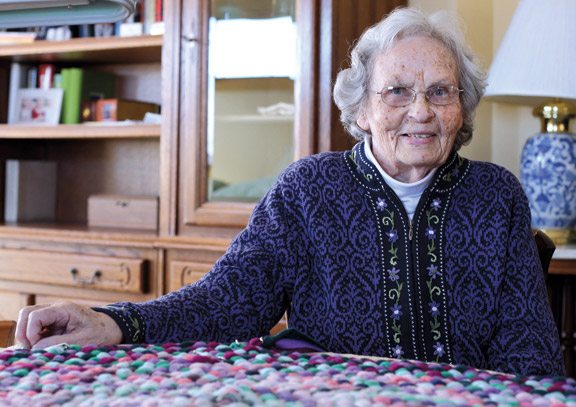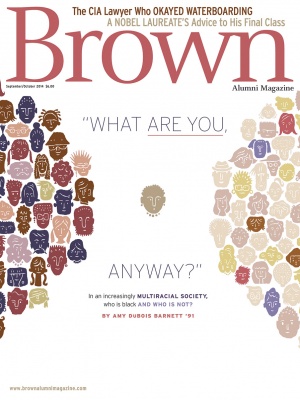Norma Sturges ’45 braided her first rug in 1949. She figures she has braided about two each year ever since. Over those 65 years she has also become perhaps the country’s strongest advocate for recognizing rug braiding as an American folk art, as important a fiber art as quilting, weaving, and knitting. “It is just as important as any art form,” she says, “and it is uniquely American.” Because most rug braiders are women, Sturges, the author of The Braided Rug Book: Creating Your Own American Folk Art, believes the craft is also an often overlooked part of women’s history. Sturges even began teaching rug braiding in 1982 after she moved to Denver and “became aware that braiding was becoming a lost art.”

The craft scene may finally be coming around to her point of view. Last
year, the National Historic Trails Interpretive Center in Casper,
Wyoming, presented an exhibit that focused exclusively on her life
work, and the Denver Art Museum recently contacted her to obtain a rug
for its collection. In February 2014, Sturges was one of five
recipients of a Wyoming Governor’s Arts Award. Her show in Casper may
have been the first ever to consist entirely of braided rugs.
Similarly, Sturges’s commission for the Denver Art Museum’s textile
wing will be the first braided rug in the museum.
The origins of the braided rug go back to the latter part of the 18th
century, when early Americans used mats made of braided straw as
residential floor coverings. Toward the beginning of the 19th century,
wool mills started to flourish in New England, and ready access to the
material prompted braiders to use it for their rugs. Wool, they found,
was both more long-lasting and more attractive than straw, and part of
the recent focus on rug braiding could be due to the renewed interest
in using natural materials. Even as commercial carpet production
evolved, rug braiding remained a common form of craftsmanship into the
early 20th century.
Braiding a rug can be time-consuming; Sturges may spend as many as 90
hours on her more elaborate creations. But braided rugs have advantages
over machine-made ones. For one thing, they are more durable. Some of
the rugs used in Sturges’s gallery display had been used for years and
yet were still presentable as art pieces. “We picked many of them up
off the floor,” she says.
Sturges has started a new rug with an innovative design she calls the
swirl. The pattern is roughly the shape of a two-dimensional pinwheel,
with each color expanding and then narrowing in a circular progression.
She describes the 42-inch work as “just an experiment.”
While Sturges is thrilled that rug braiding is finally getting its fair
shake, she wonders why it took so long. “I still don’t understand why
it got overlooked,” she says.




